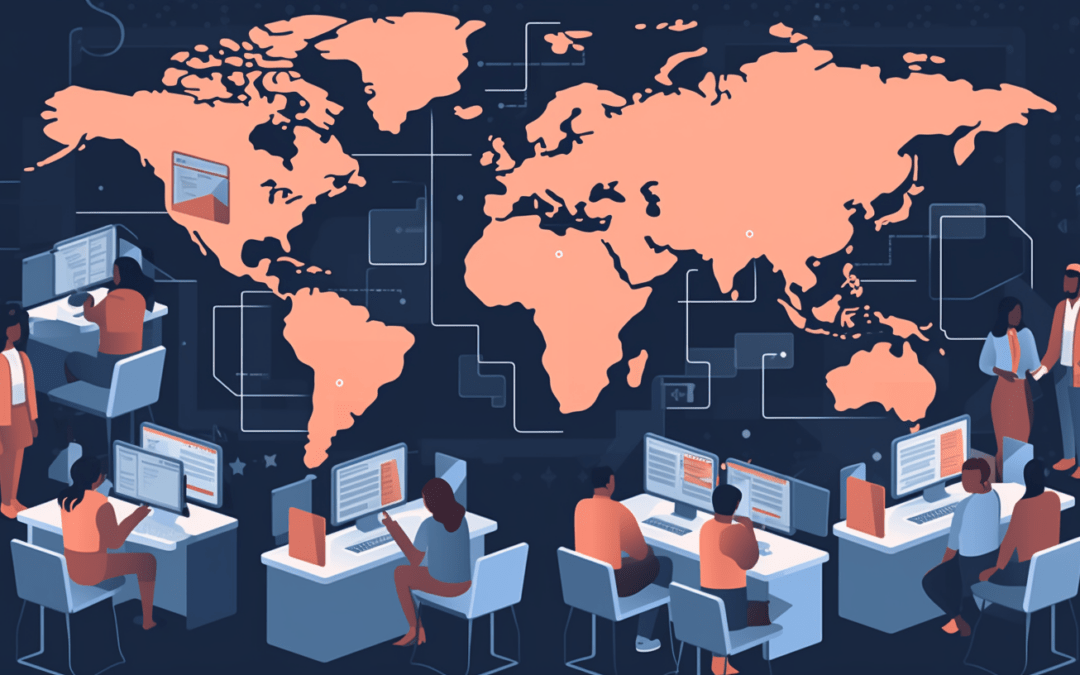There are currently two competing directives regarding workers in the Federal Government. On the one hand, workers are being told to return to offices. And on the other hand, government leases are being ordered to be terminated. While I think there should be a real plan first, I’m for getting rid of leases wherever possible.
Contrary to what is being portrayed, remote work for government employees aligns with both previous Trump administration directives and current federal workforce policies. It emphasizes efficiency, cost savings, workforce accountability, and modernization of government operations. That should apply to any administration. Let’s go deeper.
Cost Efficiency & Fiscal Responsibility
The first Trump administration prioritized reducing government waste and increasing efficiency. I think everyone is on board with that. Remote work, when properly implemented, reduces expenses related to office space, utilities, and commuting reimbursements, aligning with ongoing efforts to streamline government operations.
The Office of Management and Budget (OMB) under the first Trump administration focused on cutting unnecessary federal spending, and remote work contributes to this goal by optimizing office space utilization and lowering operational costs. Why wouldn’t the same be true for round two?
The current administration has also emphasized cost-effective government operations, with federal agencies directed to assess their real estate footprint and consider flexible workplace strategies to reduce overhead costs. Let’s just take it up a level and create a plan with some goals and metrics. Here are some that should be appealing to all concerned:
Goals:
- Reduce unnecessary government spending by optimizing office space usage.
- Decrease costs related to real estate, utilities, and employee commuting reimbursements.
- Improve financial efficiency without reducing productivity.
Success Metrics:
- Let’s look at Office space reduction. Measure the percentage decrease in the federal real estate footprint by agency.
- What about operational cost savings? Look at annual budget savings from reduced office expenses (e.g., GSA building lease reductions).
- Don’t forget about travel reimbursements. Measure the percentage reduction in travel and commuting costs.
📌 Example: The first Trump administration’s OMB directed agencies to reduce excess federal real estate, saving $3.5 billion. The current administration continues these efforts, leveraging flexible work to minimize costs.
Increased Productivity & Performance-Based Workforce Management
The first Trump administration’s President’s Management Agenda (PMA) focused on modernizing federal operations and ensuring employees are held accountable for performance. Remote work programs, when structured with clear performance metrics, allow agencies to track employee productivity effectively. The key is giving managers the tools they need and having outcome-based metrics.
The use of digital project management tools, secure communication platforms, and results-based work models can help employees remain productive and accountable, regardless of location. The current administration has reinforced the importance of employee engagement and work-life balance as key factors in attracting and retaining a skilled workforce. Well-managed remote work policies support these objectives while ensuring mission success.
Goals:
- Ensure that remote employees meet or exceed performance expectations.
- Implement outcome-based vs activity-based metrics.
- Align workforce modernization with private-sector best practices.
Success Metrics:
- Ensure employee evaluations focus on allemployees meeting or exceeding performance goals.
- What are outcome levels compared to pre-remote work implementation?
- Use survey results from supervisors on the effectiveness of remote workforce.
- Use survey results from employees on the effectiveness of supervisors.
📌 Example: The Trump-era President’s Management Agenda (PMA) emphasized data-driven performance tracking, which the current administration continues through AI-based productivity analysis and digital workflow automation.
Alignment with Private-Sector Best Practices & Workforce Competitiveness
The Trump administration emphasized running government agencies with private-sector efficiency. Many top private companies use remote or hybrid work models to attract and retain top talent while maintaining high productivity. Companies implementing Return To Office (RTO) policies see lower worker satisfaction, lower engagement, and lower retention rates. Translation – higher costs and lower outcomes
The current administration has directed agencies to adopt data-driven workforce strategies, recognizing that flexible work arrangements improve recruitment and retention, especially for highly skilled professionals in technology, cybersecurity, and data analysis roles.
Implementing work policies that work anywhere enables federal agencies to compete with the private sector for top talent, ensuring that the government workforce remains strong and adaptable.
Goals:
- Maintain a highly skilled workforce by offering competitive work arrangements.
- Reduce federal turnover rates while attracting top industry talent.
- Ensure government agencies remain competitive in hiring compared with private corporations.
Success Metrics:
- Remote work should improve the hiring rates. This should result in an increase in applications for key federal positions.
- Remote work improves retention rates. This should result in a reduction in attrition rates among skilled employees.
- The government needs to benchmark.Federal salary and benefits need to be competitive with the private sector.
📌 Example: The Trump administration encouraged private-sector efficiency in government, a policy reflected in the current administration’s push for flexible work models to retain tech, cybersecurity, and data science talent.
National Security, Continuity of Operations & Cybersecurity
The Trump administration emphasized national security and operational resilience. Remote work tests an organization’s security and resiliency daily. How often have weather-related issues made getting to the office less than realistic? National security issues generally demand specific locations, but they don’t have to all be in the same place. Secure remote work environments help mitigate risks by dispersing the workforce and reducing vulnerabilities from centralized office locations in case of emergencies, cyberattacks, or natural disasters.
Secure telework options ensure continuity of government operations (COOP) during crises, aligning with both Trump-era policies and current administration directives on ensuring workforce preparedness for emergencies.
Luckily, federal agencies have invested in advanced cybersecurity infrastructure, including secure virtual private networks (VPNs), encrypted communications, and multi-factor authentication, ensuring that remote work does not compromise security.
Goals:
- Strengthen national security through decentralized operations.
- Ensure federal agencies can operate remotely during crises or cyber threats.
- Maintain high cybersecurity standards in remote work environments.
Success Metrics:
- The media is going to measure our incident response times. We should do it as a matter of course. We need to measure the speed of federal operations in emergency scenarios.
- Remote work helps with COOP (Continuity of Operations) compliance. We need to measure the number of agencies meeting federal COOP requirements.
- Remote work forces us to focus on cybersecurity risk mitigation. This should result in a reduction in data breaches or security incidents related to remote work.
📌 Example: The Trump administration prioritized national security resilience, which aligns with current administration investments in zero-trust cybersecurity frameworks and secure cloud-based government networks.
Federal Workforce Modernization & Efficient Government Operations
While the Trump administration is focusing on reducing bureaucracy, remote work can be a tool for streamlining agencies rather than expanding them. Federal agencies are currently undergoing workforce modernization efforts, and strategic remote work implementation allows for more agile and mission-focused operations. The use of digital collaboration tools, cloud-based systems, and AI-driven automation enables agencies to improve service delivery without unnecessary workforce expansion.
Goals:
- Improve agency efficiency through technology adoption.
- Reduce bureaucratic inefficiencies while maintaining service quality.
- Ensure government functions remain effective regardless of employee location.
Success Metrics:
- Measure technology adoption rates. What percentage of agencies use AI, automation, and digital tools?
- Focus on bureaucratic process reduction, not where work takes place. Measure time savings from remote-optimized workflows.
- Find out what the public thinks of service delivery efficiency. Public satisfaction ratings with online government services are key.
📌 Example: The Trump administration’s IT modernization push continues under the current administration, leveraging cloud computing, AI, and paperless government initiatives.
Employee Satisfaction & Retention of Skilled Workers
The first Trump administration emphasized workforce accountability and results-based performance. Well-managed remote work policies align with this principle and should be carried forward with the current administration. The Federal Employee Viewpoint Survey (FEVS) has shown that remote work enhances job satisfaction, which contributes to a more stable and motivated workforce.
Goals:
- Improve job satisfaction and work-life balance without reducing performance.
- Retain top talent by offering flexibility without compromising mission success.
- Ensure employee engagement and motivation remain high.
Success Metrics:
- We should review the Federal Employee Viewpoint Survey (FEVS) scores. There should be a focus on Increasing job satisfaction ratings.
- What are employee retention rates? Do we want a reduction in voluntary departures?
- We want the government to have a favorable workplace flexibility rating. Why wouldn’t you want employee approval of remote work policies?
📌 Example: The Trump administration emphasized workforce accountability, and the current administration integrates this with hybrid models, ensuring high engagement without lowering expectations.
Conclusion
Remote work, when strategically implemented with appropriate measures, aligns with both Trump administration directives and current federal workforce policies on efficiency, cost savings, workforce modernization, national security, and employee retention. Rather than expanding bureaucracy, remote work serves as a cost-effective, performance-driven tool that enhances federal operations while maintaining high standards of accountability and mission success.
Hopefully, we can take a step back, put a plan and metrics in place, and start implementing the required changes. Currently, it seems like everything is happening at once which makes it hard to measure what is actually happening. Things are already headed in the right direction for an efficient government by embracing remote work. Everyone just needs to accept it.



